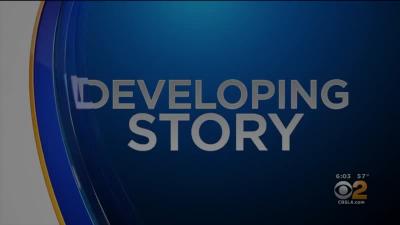
In the middle of the COVID-19 epidemic, flaws in the SARS-CoV-2 diagnostic
test were identified by the impending supply shortages of nasopharyngeal swabs and nucleic acid isolation and purification kits. The ASU Biodesign Clinical Testing Lab (ABCTL), which converted from a research lab to SARS-CoV-2 testing lab, was not an exception to these shortages, but the consequences were greater due to its significant testing load in the state of Arizona. In response to the shortages, researchers at The Department of Epidemiology of Microbial Diseases, at the Yale School of Public Health created SalivaDirect method, which is an epidemic effective test, that accounts for limitations of materials, accessibility to specialized lab equipment, time per test, and cost per test. SalivaDirect simplified the diagnostic process by collecting samples via saliva and skipping the nucleic acid extraction and purification, and did it in a way that resulted in a highly sensitive limit of detection of 6-12 SARS-CoV-2 copies/μL with a minimal decrease in positive test agreement.

The ASU Biodesign Clinical Testing Laboratory began in March 2020 after the severe acute respiratory syndrome, coronavirus 2, began spreading throughout the world. ASU worked towards implementing its own efficient way of testing for the virus, in order to assist the university but also keep the communities around it safe. By developing its own strategy for COVID-19 testing, ASU was on the forefront of research by developing new ways to test for the virus. This process began when research labs at ASU were quickly converted into clinical testing laboratories, which used saliva testing to develop swift COVID-19 diagnostic tests for the Arizona community. The lab developed more accurate and time efficient results, while also converting Nasopharyngeal tests to saliva tests. Not only did this allow for fewer amounts of resources required, but more individuals were able to get tested at faster rates. The ASU Biodesign Clinical Testing Laboratory (ABCTL) was able to accomplish this through the adaptation of previous machines and personnel to fit the testing needs of the community. In the future, the ABCTL will continue to adapt to the ever-changing needs of the community in regards to the unprecedented COVID-19 pandemic. The research collected throughout the past year following the breakout of the COVID-19 pandemic is a reflection of the impressive strategy ASU has created to keep its communities safe, while continuously working towards improving not only the testing sites and functions, but also the ways in which an institution approaches and manages an unfortunate impact on diverse communities.

This thesis project is part of a larger collaboration documenting the history of the ASU Biodesign Clinical Testing Laboratory (ABCTL). There are many different aspects that need to be considered when transforming to a clinical testing laboratory. This includes the different types of tests performed in the laboratory. In addition to the diagnostic polymerase chain reaction (PCR) test that is performed detecting the presence of severe acute respiratory syndrome coronavirus 2 (SARS-CoV-2), antibody testing is also performed in clinical laboratories. Antibody testing is used to detect a previous infection. Antibodies are produced as part of the immune response against SARS-CoV-2. There are many different forms of antibody tests and their sensitives and specificities have been examined and reviewed in the literature. Antibody testing can be used to determine the seroprevalence of the disease which can inform policy decisions regarding public health strategies. The results from antibody testing can also be used for creating new therapeutics like vaccines. The ABCTL recognizes the shifting need of the community to begin testing for previous infections of SARS-CoV-2 and is developing new forms of antibody testing that can meet them.

In mid-March of 2020, Arizona State University transformed one of its research labs into ASU Biodesign Clinical Testing Laboratory (ABCTL) to meet the testing needs of the surrounding community during the COVID-19 pandemic. The lab uses RT-qPCR, or reverse transcription polymerase chain reaction, to match the components of a biosample to a portion of the SARS-CoV-2 genome. The ABCTL uses the TaqPath™ COVID-19 Combo Kit, which has undergone many different types of efficacy and efficiency tests and can successfully denote saliva samples as positive even when an individual is infected with various emerging strains of the SARS-CoV-2. Samples are collected by volunteers at testing sites with stringent biosafety precautions and processed in the lab using specific guidelines. As the pandemic eventually becomes less demanding, the ABCTL plans to utilize the Devil’s Drop-off program at various school districts around Arizona to increase testing availability, transfer to the SalivaDirect method, and provide other forms of pathogen testing to distinguish COVID-19 from other types of infections in the ASU community.





This Project Report documents the accomplishments of an extraordinary group of students, faculty, and staff at the Arizona state University, who participated in a year-long, multidisciplinary, first-of-its-kind academic endeavor entitled “The Making of a COVID Lab.” The lab that is the focus of this project is the ASU Biodesign Clinical Testing Laboratory, known simply as the ABCTL.

Under the direction of Dr. Carolyn Compton, a group of seven Barrett honors students have embarked on a truly unique team thesis project to create a documentary on the process of creating a COVID-19 testing laboratory. This documentary tells the story of the ASU Biodesign Clinical Testing Laboratory (ABCTL), the first lab in the western United States to offer public saliva testing to identify the presence of COVID-19.